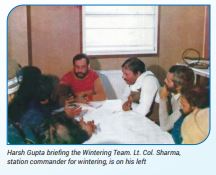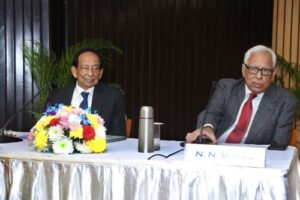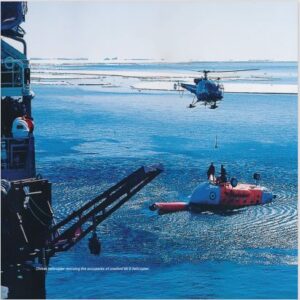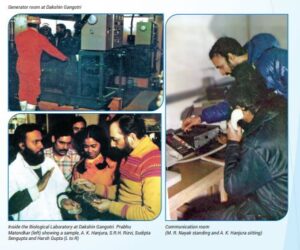Meet the man who led the team that built Dakshin Gangotri at Antartica
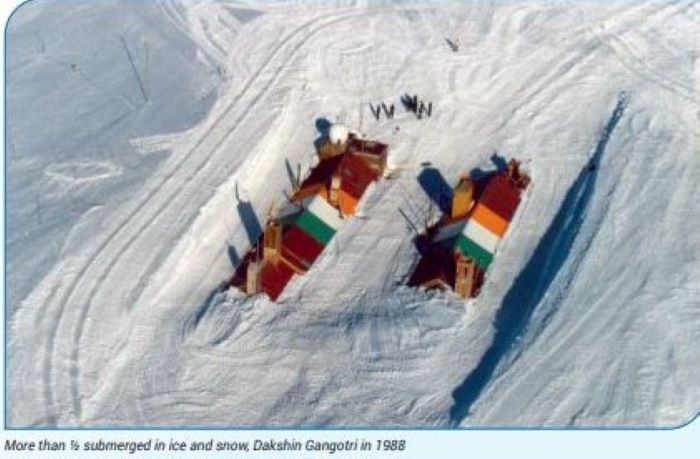
Rajkumari Sharma Tankha
Not many would know that according to an estimate based on US surveys, as much as 45,000 million barrels of oil and 15 trillion cubic feet of gas may lie off Antarctica’s coast and that perhaps the largest coalfield in the world, stretching around 2500 km along the Transantarctic Mountains, lies in Antarctica.
The coldest continent in the world, Antarctica has over 98 per cent of its surface, an area of 14 million sq km, buried beneath a thick continental ice sheet, the average thickness of which is 1,800 m. With an average elevation of 2500 m, it is the highest continent. The average annual precipitation being only 10 cm, it is also the driest continent. Strong winds prevail over the entire continent which constrain human activity even more than the rough terrain and the cold climate. And it was here that the first wintering station, Dakshin Gangotri, was set up by India under the able leadership of Dr Harsh Gupta who led the 3rd expedition to Antarctica.
In an exclusive interview with L&M, Dr Gupta reminisces the challenging days and life in the toughest terrain known to man as also doing what no one had ever done before, thus making India proud globally. And writing his memoirs in Building Dakshin Gangotri in Antarctica: A Miracle – the was released by IIC President NN Vohra last week.
Dr Gupta (left) and former bureaucrat NN Vohra at the book launch function
It was close to four decades back that the first wintering station, Dakshin Gangotri, was set up in Antarctica. Please share your memories.
I have very fond memories of our 3rd Indian Scientific Expedition to Antarctica during 1983-84. During the late 1970s and early 1980s, India was keen to be a part of global efforts to better understand Antarctica. The nations then involved with Antarctica were zeroing in to declare that it should be subjected to only scientific research so that we better understand the functioning of Planet Earth. There would be no exploitation of her immense natural resources. To be able to become a part of these endeavours, it was necessary to demonstrate that India is keen and capable of round the year scientific experiments and observation in Antarctica. Obviously, this required setting up an observation facility around the year. That required setting up a permanent base station.
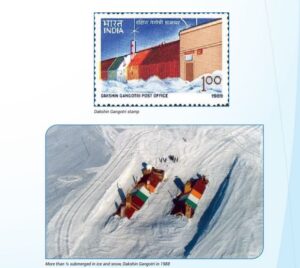
The 1st Indian Expedition to Antarctica was launched in 1981, when under the leadership of Dr Qasim, the team went to Antarctica in the ship, Polar Circle. It was a successful expedition. In 1982, the 2nd Expedition was led by Mr Raina. It was very successful, and quite a bit of scientific work was carried out. However, in both these expeditions, members lived on the ship. For the 3rd Expedition, the major challenge was to set up a permanent base and populate it in one Antarctic summer. There is a ~1 m thick layer of ice, known as fast ice, that surrounds Antarctica around the year and melts only during the Antarctic summer months (January-February). These are the only two months when a ship can reach the shelf ice. The ship must leave before the fast ice is formed again, ice-locking the ship.
The construction of a double story building on a raft foundation of 620 sq m., complete with heating, generators, laboratories, medical room, communication room, gymnasium, ice-melt tank and living space for 12 members of the wintering team was to be erected and commissioned in two months’ time. Several days are wasted due to blizzards and whiteouts (ice particles getting air-borne due to wind, and multiple reflection of sun rays makes it so glittering that nothing is seen). So, having achieved this feat was indeed a miracle, despite having a near fatal MI-8 helicopter crash on December 29, 1983. The coordinated work of all the team members made it possible. India became a member of the Antarctic Treaty and is among a few nations doing outstanding research work in Antarctica.
When there is only 15% chances of succeeding and the team knows this, how does one keep them motivated in such harsh terrain?
An excellent question. The motivation was that almost an impossible task would be achieved. Above all, my commitment that if I do not build the station, I will not come back to the Prime Minister became a ‘WAR CRY’.
When did the idea of penning this book come to your mind and how did you go about it?
I had been thinking about writing it down for a long time. However, other commitments kept me very busy. The Covid19 locked me up for 20 months and it provided the opportunity to write it.
Was it tougher building Dakshin Gangotri in Antarctica or Building Dakshin Gangotri in Antarctica: A Miracle?
Of course, building Dakshin Gangotri in Antarctica was much tougher.
